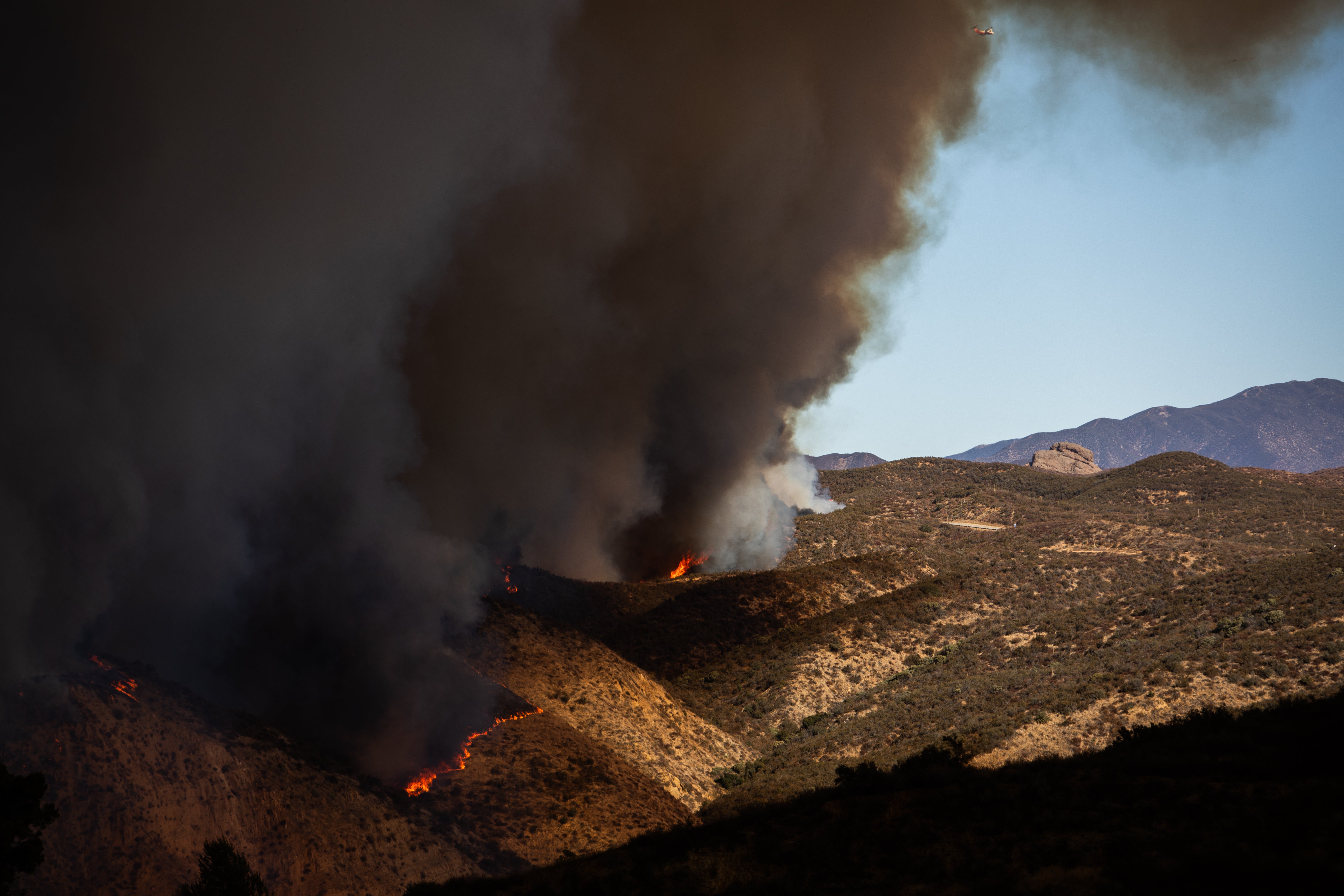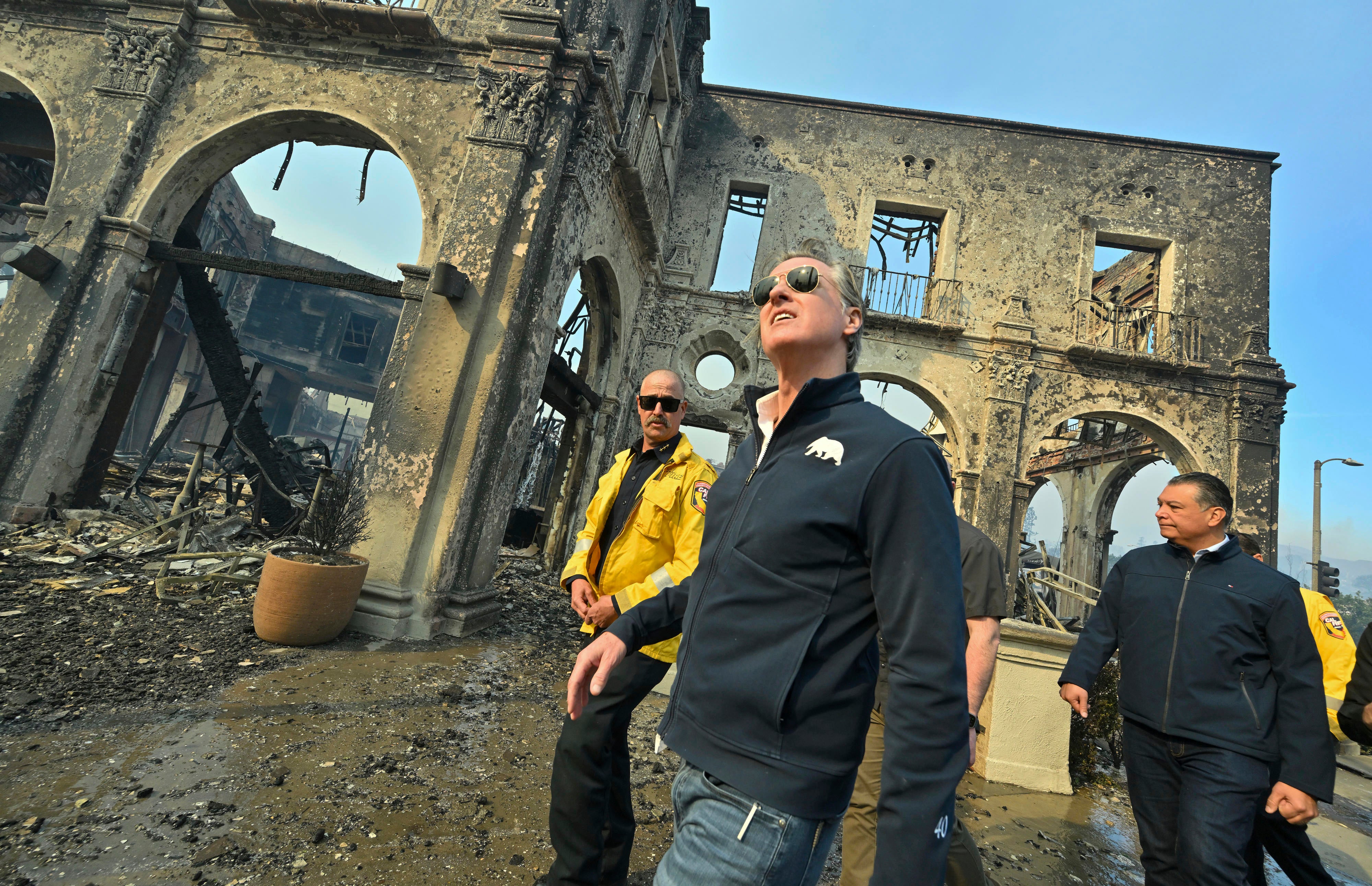As critical fire weather ends in Southern California this week, residents have been warned about continuing threats from a weekend storm that could result in dangerous flash flooding and debris flows in wildfire burn scar areas.
Following a series of devastating and deadly wildfires, forecasters have said the region can expect mountain snow, rain, cooler temperatures, and a “small but non-zero threat of a thunderstorm moving over a burn area.”
Areas in Los Angeles County will likely see about three-quarters of an inch of rain following months without precipitation, according to KTLA.

“Both areas suffered watershed damage … to such a significance that we expect massive debris-laden flows when it rains,” Los Angeles County Department of Public Works Director Mark Pestrella told reporters last weekend, referring to the areas of the Palisades and Eaton fires.
“In an event that we have major rain, we do expect that all of the street areas and all the communities will be impacted by debris flows that could be hazardous to human health,” he warned.
Wildfires burn away vegetation and cause a chemical reaction in the soil. This leads to the creation of a hardened and water-resistant layer known as “hydrophobic soil.”
The layer prevents rain from soaking into the ground, causing it to run off. Without vegetation to hold the soil, the runoff flows faster and gains power as it heads downhill, increasing the risk of flash flooding and fast-moving landslides of debris.
Usually beginning on hills or mountains, debris flows can happen during downpours of just half an inch of rain an hour.
Like flash floods, debris flows occur rapidly and unpredictably, traveling at speeds up to 35mph. They can move faster than a person can run and catch up to vehicles. They can also occur in places with no prior history of flooding.
They can carry boulders, trees, and cars, and travel for miles. After the Thomas fire struck in 2017, a debris flow in Montecito, California, killed 23 people and damaged or destroyed more than 400 homes.
By the time a debris flow is coming, it will be too late to safely escape. People should never cross a bridge if a flow is approaching or cross a road with flowing water or mud.
“If you do get stuck in the path of a landslide move uphill as quickly as possible,” the National Weather Service advises.

Before a debris flow, people should monitor the weather, stay awake during storms that could cause landslides, and watch environmental cues. Fluctuating water levels, for instance, can indicate debris is blocking water and then releasing upstream.
To prepare for such an event, members of the California Watershed Emergency Response Teams and the U.S. Forest Service have been studying the edges of the Eaton and Palisades fires to determine what patches of land burned most severely and produce hazard maps, according to The New York Times.
On Monday, Governor Gavin Newsom issued an executive order to expedite flood control measures as residents begin returning to areas evacuated during the Palisades Fire.
Pasadena officials are asking homeowners to prepare their properties for potential mudslides, according to NBC 4 Los Angeles.
Some residents were stocking up on sandbags early Friday morning. Several voiced concerns about what could happen.
“The problem is right now is there’s a big pile of debris in front of the drain system,” Eugene Escarrega, a Pasadena resident, told ABC 7. “I’m afraid if they don’t get that today, by tomorrow, we’re going to have a problem. If the water comes straight down, it’s going to come right through my front door.”
“We had mudslides last year when we had all the rain, without all the fire and devastation, so I am kind of concerned about that,” Palisades resident Carrie Galpin told FOX 11 Los Angeles.
“Even now that the fires are out, looming threats of mud and debris flows are a significant threat to the safety of our communities,” said Los Angeles County Board Chair Kathryn Barger. “It’s imperative that this preventative work begin immediately.”
Wildfires have lasting effects on the landscape and create a heightened risk of flooding for years after they’re put out. And, in a warming world, hydroclimate whiplash has made these threats more likely.
“The fire scientists are telling us that wildfires are increasing in size and severity,” Dr. Jason Kean, a research hydrologist with the United States Geological Survey, told The Times. “From that fact alone, you’re exposing more terrain and making more terrain vulnerable to post-fire problems.”


